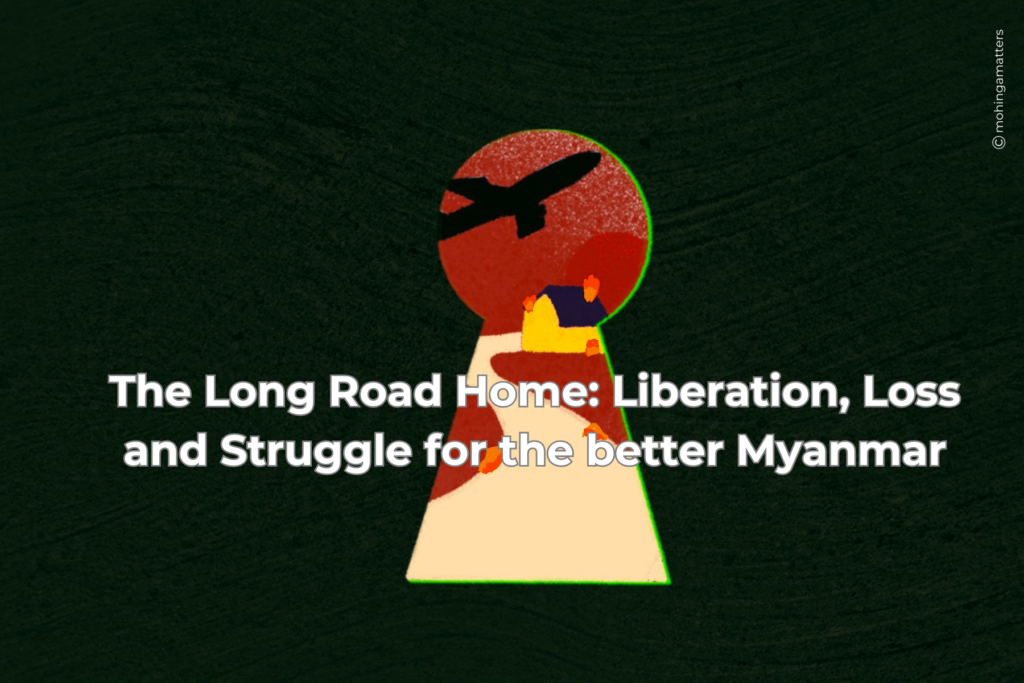
On August 12, Ma Aye Myint Aung Aung shared a momentous update on Facebook: “My hometown, Tagaung, is liberated.” For her and countless others, this declaration carried a bittersweet blend of hope and sorrow. Two days later, the Irrawaddy news outlet echoed this sentiment with the headline, “Myanmar Junta Driven from the Birthplace of the Burmese Empire.” This event was emblematic of a broader trend that has emerged in the three years since the military coup—opposition forces, including the National Unity Government (NUG) and Ethnic Armed Organizations (EAOs), have been steadily reclaiming territories, moving closer to a future free from military oppression.
The NUG claims that revolutionary forces, in alliance with EAOs, now control over 60% of the country. The launch of Operation 1027 has accelerated these gains, allowing these forces to seize key junta positions and territories, leaving the military in disarray. Reflecting on these victories, Aye Myint Aung expressed surprise in an interview, admitting that she did not expect major cities like hers to be liberated so soon, thinking instead that the revolution would begin by reclaiming rural areas. Yet, this has become a reality since the launch of Operation 1027. However, beneath these triumphs lie the deep scars of war, especially for those who have lost everything.
For people like Ma Aye Myint Aung Aung, the liberation of their hometowns is more than just a military victory; it is a deeply personal moment, infused with the hope of returning to a place that once served as the heart of their lives. Yet, this hope is often confronted with harsh realities. As the People’s Defense Force (PDF) soldiers advance, many have shared poignant images of their homecomings—standing before the ruins of their homes, which have been torched by retreating junta soldiers. These images serve as stark reminders of what has been lost.
Since the February 2021 coup, the sense of home for millions of Myanmar’s citizens has been violently disrupted. According to the UNHCR, by August 2024, 3 million people have been displaced, with over 60,000 fleeing to neighboring countries. Sagaing Region, which was once untouched by internal displacement, now bears the heaviest burden, with 1,246,300 internally displaced persons (IDPs). The Mandalay Region, where Tagaung is located, also experienced its first waves of displacement, now home to 26,200 IDPs.
The displacement is not just about losing physical structures—it’s about the loss of community, culture, and identity. Homes in Myanmar are more than mere places of shelter; they are repositories of familial history and cultural heritage. When a home is destroyed, it takes with it a piece of the family’s soul. This is particularly true in rural areas, where generations have lived in the same place, maintaining traditions and ways of life that are intimately tied to the land. For many, returning home is an emotional and spiritual journey, not just a physical one. There are still millions who have not been able to return home. A PDF member who has been unable to return since 2021 shared his thoughts in an interview: “When I get home, I will go straight to my dad’s embrace and kiss him. I want to return home. I am trying my best here and I believe it is possible.” Ma Aye Myint Aung also expressed her determination, saying, “Both those who can go home and those who cannot will work twice as hard to make returning home possible for everyone.”
Coming home also involves confronting the reality of what has been lost, but it also holds the possibility of rebuilding. The act of returning home, or at least the dream of it, offers a form of resistance against the violence that has uprooted them. Even as the military continues its brutal campaign, the determination to return and rebuild stands as a testament to the resilience of the Myanmar people. In some areas under the control of EAOs and in liberated zones, communities have begun to rebuild even amidst ongoing conflict. Efforts are underway to restore schools, medical facilities, and other social services in these liberated areas, as communities strive to recreate a semblance of their former lives.
Yet, the road to reclaiming and rebuilding these homes is fraught with challenges. Landmines, continued military presence, and the lack of resources make it perilous to return. Moreover, the psychological toll of displacement cannot be underestimated. Many who have returned find themselves in mourning for what was lost—a life, a community, a way of being that may never be fully restored. Efforts to rebuild must consider not only the physical reconstruction of homes but also the restoration of community networks and cultural practices. The trauma of displacement will linger, and addressing this requires more than just brick and mortar; it requires healing the deep psychological wounds inflicted by years of violence and loss.
For Ma Aye Myint Aung Aung and millions of others, the journey home is symbolic of their broader struggle for freedom and dignity. It is about reclaiming not just land, but the history and the future. The story of Tagaung’s liberation, while a moment of triumph, also underscores the ongoing plight of Myanmar’s displaced population—a people who, despite the devastation, continue to dream of the day when they can finally return home.

